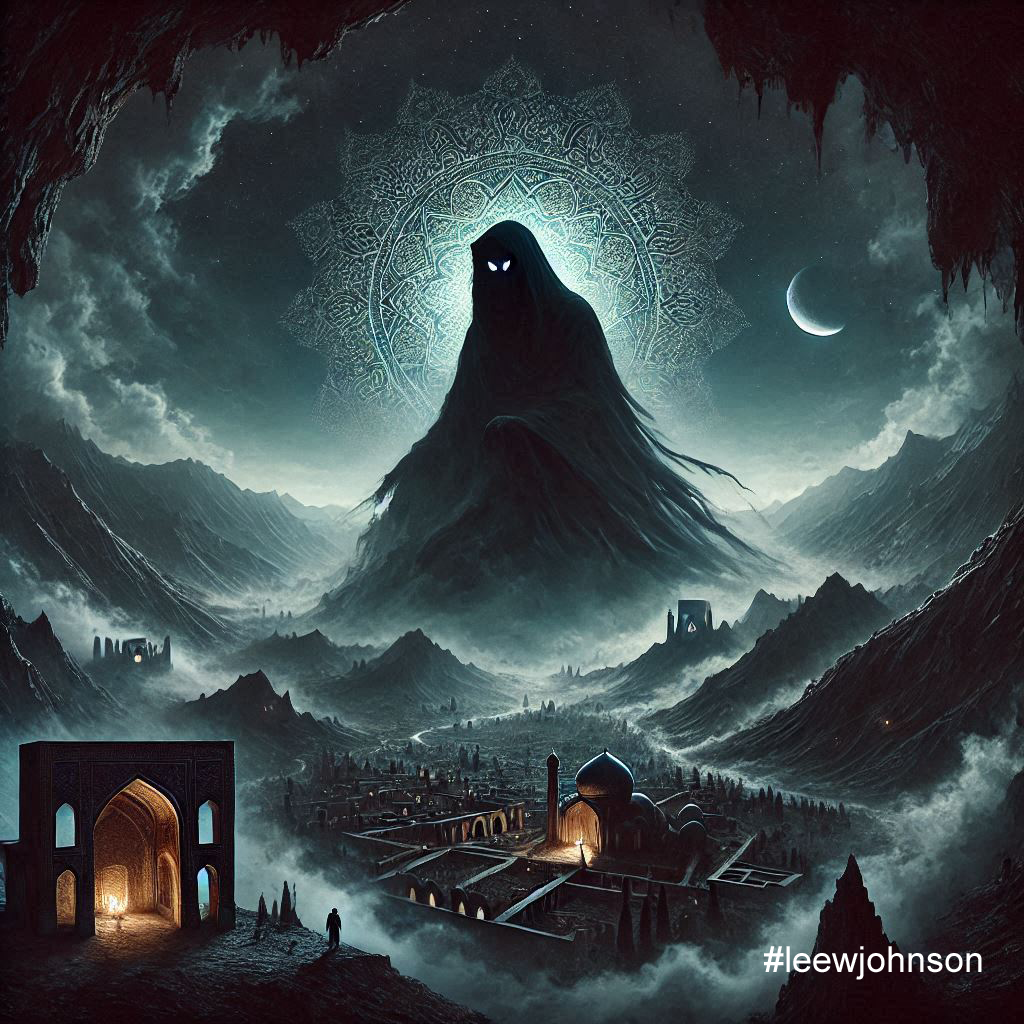Ahriman

Ahriman is one of the central figures in Zoroastrian theology, which flourished in ancient Persia under the teachings of the prophet Zoroaster (or Zarathustra). Zoroaster’s doctrine presents a dualistic cosmology, wherein the forces of good, led by Ahura Mazda—the Wise Lord—are locked in eternal opposition with the destructive and chaotic forces of Angra Mainyu, or Ahriman.
The Gathas, Zoroaster’s hymns and the oldest Zoroastrian texts, provide the foundation for this cosmological struggle. In these verses, Ahriman is not explicitly named but is implied as the counterpart to Spenta Mainyu, the Holy Spirit of Ahura Mazda. It is later Zoroastrian texts, such as the Bundahishn and Vendidad, that flesh out Ahriman’s persona, describing him as the embodiment of chaos, darkness, and falsehood, ever striving to undermine the order and harmony of creation.
Ahriman as a Force of Opposition
Unlike the Christian concept of the Devil, Ahriman is not a fallen angel or a being subordinate to the supreme deity. In Zoroastrian dualism, he is an independent and co-eternal force, existing alongside Ahura Mazda. This independence underscores a profound philosophical premise: the universe is shaped by the interplay of opposites, where good and evil are not merely moral abstractions but intrinsic aspects of reality.
Ahriman represents druj, or the Lie, the antithesis of asha, the cosmic truth and order upheld by Ahura Mazda. His essence is one of negation and destruction, seeking to unravel the fabric of existence. This opposition is not merely ethical but metaphysical, illustrating the delicate balance between creation and entropy, light and shadow.
Mythological Narratives
In Zoroastrian mythology, Ahriman’s defiance begins with his refusal to participate in the ordered creation of the world. When Ahura Mazda forms the physical universe as a battleground for the struggle between good and evil, Ahriman, consumed by envy and hatred, counters by introducing suffering, disease, and death. This mythological narrative serves as an allegory for the human experience, where the perpetual tension between constructive and destructive forces shapes the journey of existence.
One of the most striking myths involves Ahriman’s creation of the daevas, considered malevolent spirits who further his agenda of chaos. These entities, manifestations of specific vices like greed and wrath, represent the psychological and social challenges humanity must overcome to align with the path of asha.
Philosophical and Esoteric Interpretations
Zoroastrian dualism, as embodied by the relationship between Ahura Mazda and Ahriman, poses profound questions about the nature of evil and free will. Ahriman is not a mere caricature of malevolence but a symbol of the inherent struggle within the cosmos—and within the human soul. His existence compels reflection on the purpose of opposition and suffering. Without Ahriman, there can be no struggle, and without struggle, no growth.
Some scholars and mystics have interpreted Ahriman as a necessary counterpart to Ahura Mazda. In this view, Ahriman is not entirely external to the divine order but serves as a catalyst for evolution. The battle between light and darkness compels humanity to strive toward higher understanding, to refine itself in the crucible of adversity.
The esoteric dimensions of Zoroastrian thought further enrich this perspective. For instance, the Zurvanite heresy, a later development within Zoroastrianism, posits that both Ahura Mazda and Ahriman are the offspring of Zurvan, the primordial god of infinite time. This reinterpretation frames Ahriman as an aspect of cosmic duality born from a singular source, hinting at a monistic undercurrent within Zoroastrianism.
Ahriman Beyond Zoroastrianism
The influence of Ahriman extends beyond Zoroastrian theology, finding echoes in other religious and philosophical systems. In Manichaeism, for example, the dualism of light and darkness is central, with Ahriman’s characteristics reflected in the forces of chaos and ignorance. Similarly, in Christian theology, Satan bears some resemblance to Ahriman, though he is stripped of his co-eternality and subordinated to the singular omnipotence of God.
In modern esotericism and occult traditions, Ahriman has been reimagined as a symbol of rebellion, individuality, and the shadow aspect of the psyche. Rudolf Steiner, the founder of Anthroposophy, described Ahriman as a spiritual force embodying materialism and cold intellectualism, standing in opposition to the Christ impulse. In this framework, Ahriman is not an antagonist to be defeated but a force to be understood and integrated, reflecting the psychological need to reconcile the shadow self.
The Relevance of Ahriman Today
In the contemporary world, Ahriman’s symbolism resonates with the existential challenges of modernity. He embodies the forces of chaos and destruction that threaten to unravel social, environmental, and spiritual order. Yet, he also represents the shadow side of progress—the unintended consequences of human ambition and technological advancement.
The enduring myth of Ahriman invites reflection on how humanity confronts its own capacity for harm and self-deception. It challenges us to recognise the necessity of opposition and to find balance within the dualities that define existence.
Conclusion
Ahriman is far more than a figure of malevolence; he is a profound symbol of the dualistic tension at the heart of Zoroastrianism and a catalyst for philosophical inquiry into the nature of good and evil. His mythos transcends religious boundaries, offering a timeless allegory for the struggles of existence and the human condition. To understand Ahriman is to confront the shadow within, to embrace the complexity of the cosmos, and to seek harmony in the interplay of light and darkness. In this way, Ahriman remains as relevant today as he was in the ancient Zoroastrian texts, a reminder that the path to truth and order lies through the confrontation—and ultimately the integration—of chaos and the Lie.